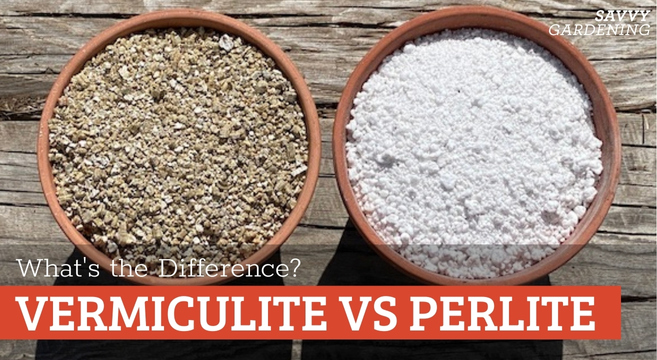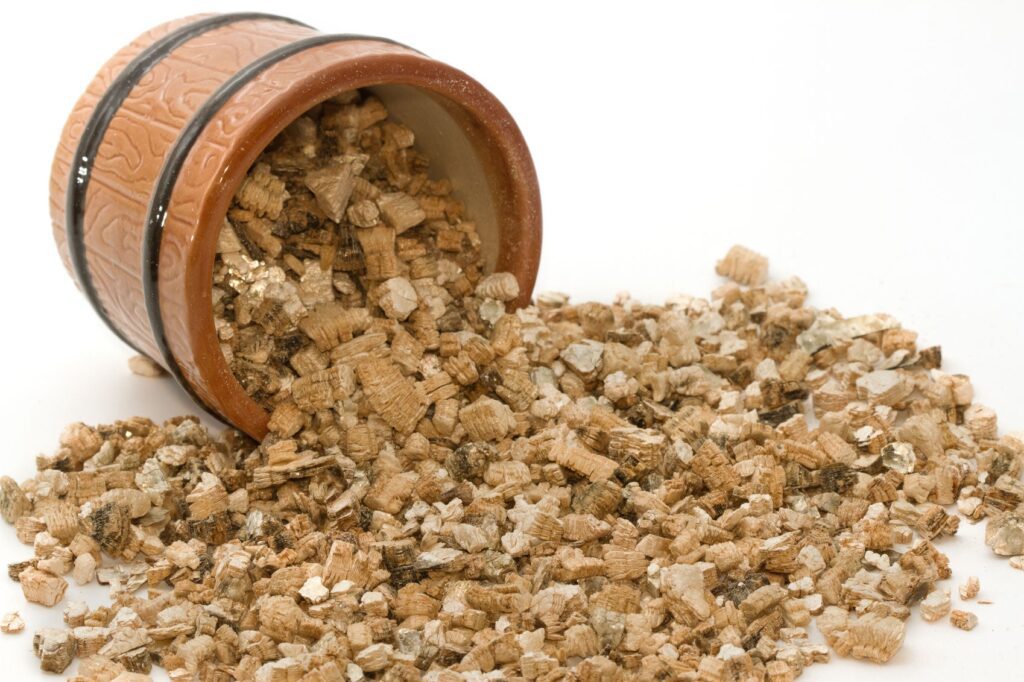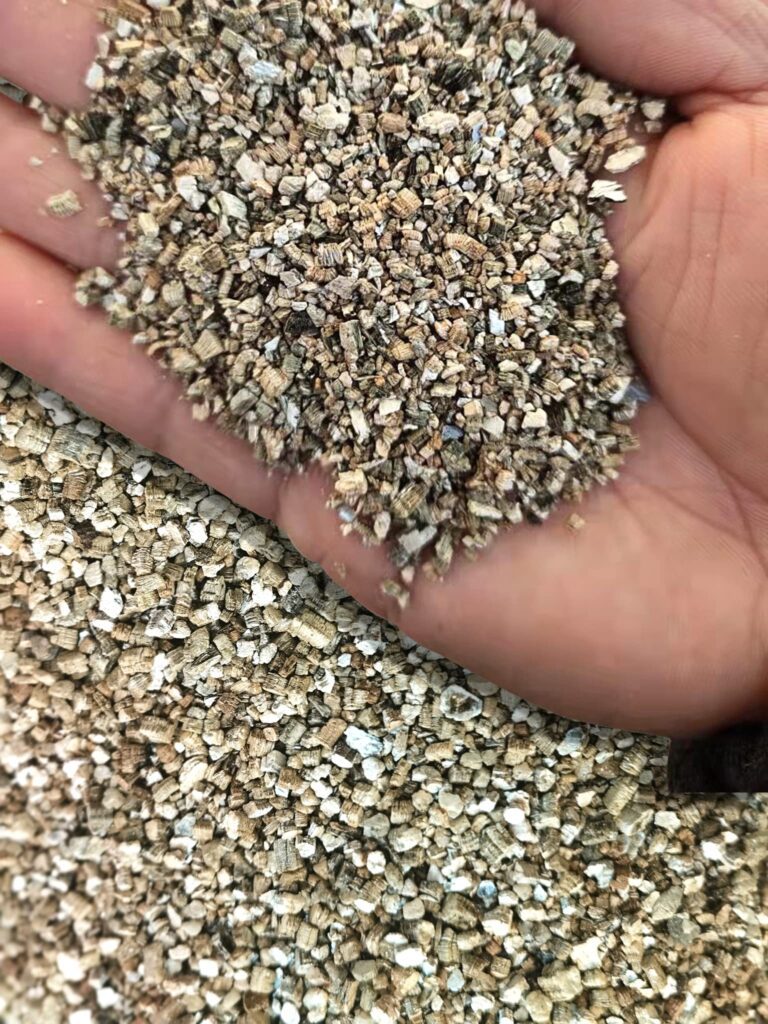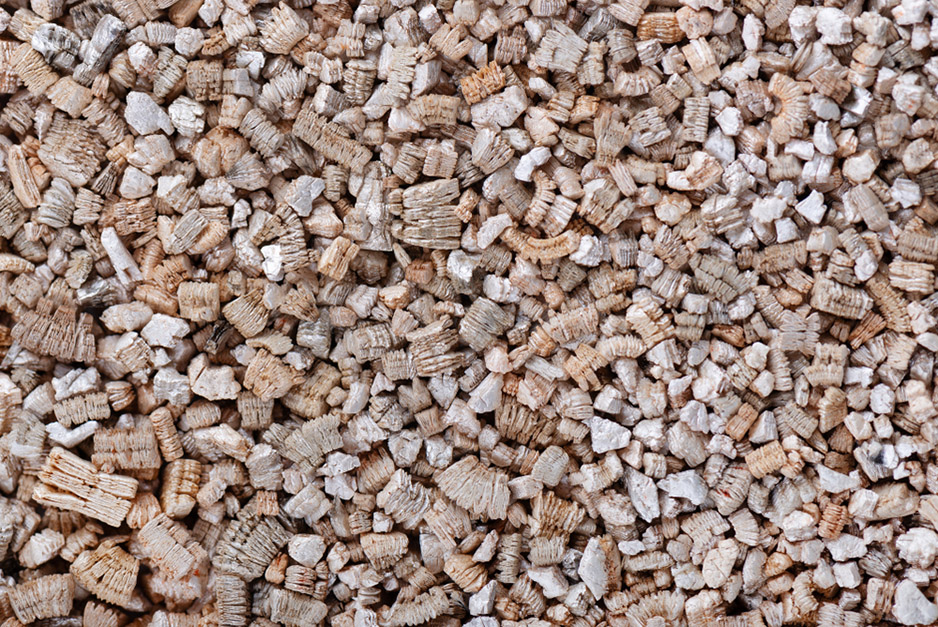If you’re struggling with clay soil in your garden, you may be wondering if vermiculite is the answer to your problems. Clay soil can present challenges for gardeners, as its dense texture limits drainage and can make it difficult for plants to thrive. In this article, we’ll explore whether vermiculite has the power to break up clay soil, allowing your plants to grow healthy and strong. So, if you’re tired of battling with stubborn clay, read on to discover if vermiculite can be the solution you’ve been searching for.
What is Vermiculite?
Definition of vermiculite
Vermiculite is a mineral that is widely used in gardening and horticulture due to its excellent properties for soil improvement. It is a natural, non-toxic material that is formed by the weathering of certain types of rocks. Vermiculite has a unique layered structure, which gives it its characteristic ability to expand and retain water.
How is vermiculite produced?
Vermiculite is commercially produced in mines, where the mineral is extracted from the ground. The mined vermiculite is then processed to remove impurities and graded into different particle sizes. The final product is a lightweight, granular material that is ready to be used in various applications, including soil improvement.
Properties and characteristics of vermiculite
Vermiculite possesses several properties that make it an ideal soil amendment. Firstly, it has a high water-holding capacity, which helps retain moisture in the soil and prevents it from drying out quickly. Additionally, vermiculite has excellent aeration properties, allowing roots to access oxygen more easily. It is also pH-neutral, which means it does not significantly affect the acidity or alkalinity of the soil. Lastly, vermiculite has good insulation properties, helping to regulate soil temperature.
Understanding Clay Soil
Definition of clay soil
Clay soil is a type of soil that is characterized by its high clay content. It is known for its fine texture and ability to hold onto moisture for an extended period. Clay soil can be challenging to work with due to its poor drainage and tendency to become compacted. It can also become hard and clumpy when dry, making it difficult for plants to establish healthy root systems.
Properties and characteristics of clay soil
Clay soil has distinct properties that set it apart from other soil types. It has excellent nutrient-holding capacity, which can be beneficial for plants. However, the compacted nature of clay soil poses challenges for proper root growth and water infiltration. Clay soil also tends to become easily waterlogged, leading to poor drainage and inadequate oxygen supply to plant roots. Furthermore, clay soil can become hard and compacted, making it hard for plants to penetrate and establish themselves.
Challenges of gardening in clay soil
Gardening in clay soil can be challenging due to its unique characteristics. The poor drainage of clay soil can lead to waterlogged conditions, which can cause root rot and other diseases in plants. The heavy texture of clay soil also makes it difficult for water and air to penetrate, affecting root growth and nutrient uptake. Additionally, clay soil tends to become hard and clumpy when dry, making it challenging to cultivate and causing water runoff during heavy rains. These challenges can limit plant growth and productivity in clay soil.


Vermiculite’s Role in Soil Improvement
How does vermiculite help improve soil?
Vermiculite plays a vital role in soil improvement by addressing the challenges posed by clay soil. Its high water-holding capacity helps to retain moisture in the soil, preventing waterlogging and promoting proper drainage. The ability of vermiculite to retain water also helps to keep the soil evenly moist, even during dry periods. In addition, vermiculite’s excellent aeration properties allow for the movement of air in the soil, promoting root respiration and healthy plant growth.
Benefits of using vermiculite in gardening
There are numerous benefits to using vermiculite in gardening, especially in clay soil. Firstly, vermiculite helps to break up clay soil, making it more manageable and easier to work with. It improves the soil structure, allowing for better root penetration and nutrient absorption. Additionally, vermiculite’s water-holding capacity helps to counterbalance the poor drainage of clay soil, preventing waterlogged conditions. The improved aeration provided by vermiculite also enhances the supply of oxygen to plant roots. Overall, using vermiculite in gardening can lead to healthier plants, increased yields, and improved soil fertility.
Suitability of vermiculite for clay soil
Vermiculite is highly suitable for clay soil due to its unique properties and ability to address the challenges specific to this type of soil. Its water-holding capacity helps to balance the excessive moisture in clay soil, preventing waterlogging and ensuring adequate hydration for plant roots. Vermiculite’s aeration properties also help to counteract the compacted nature of clay soil, improving root respiration and overall plant health. The lightweight nature of vermiculite allows it to break up the heavy texture of clay soil, improving its structure and promoting better root development. Overall, vermiculite is a valuable tool in improving the quality and fertility of clay soil.
Mechanism of Vermiculite in Breaking Up Clay Soil
Understanding vermiculite’s ability to break up clay soil
Vermiculite has the remarkable ability to break up clay soil and improve its structure. When incorporated into clay soil, vermiculite particles create air pockets and spaces, allowing for easier soil penetration by roots and water. The expansion and contraction properties of vermiculite also help to loosen the compacted clay, making it more friable and less prone to compaction. This break-up of clay soil allows for improved drainage, nutrient availability, and root development, leading to healthier plants and better gardening outcomes.
Physical changes caused by vermiculite in clay soil
The addition of vermiculite brings about several physical changes in clay soil. Firstly, vermiculite particles help to improve soil porosity by creating spaces and air pockets, allowing for better water infiltration and root growth. The expansion and contraction properties of vermiculite also help to reduce soil compaction, making the soil more friable and increasing its ability to hold moisture. Additionally, vermiculite’s lightweight nature reduces the density of clay soil, making it easier to work with and improving root penetration.
Chemical changes brought about by vermiculite in clay soil
Vermiculite also brings about some chemical changes in clay soil. It has a neutral pH, which means it does not significantly affect the acidity or alkalinity of the soil. This neutrality is beneficial as it allows plants to thrive in a balanced pH environment. Vermiculite also has ion exchange properties, which help to improve nutrient availability in the soil. It can hold onto essential nutrients such as potassium, magnesium, and calcium, releasing them to plant roots as needed. These chemical changes contribute to the overall improvement of clay soil and its suitability for plant growth.
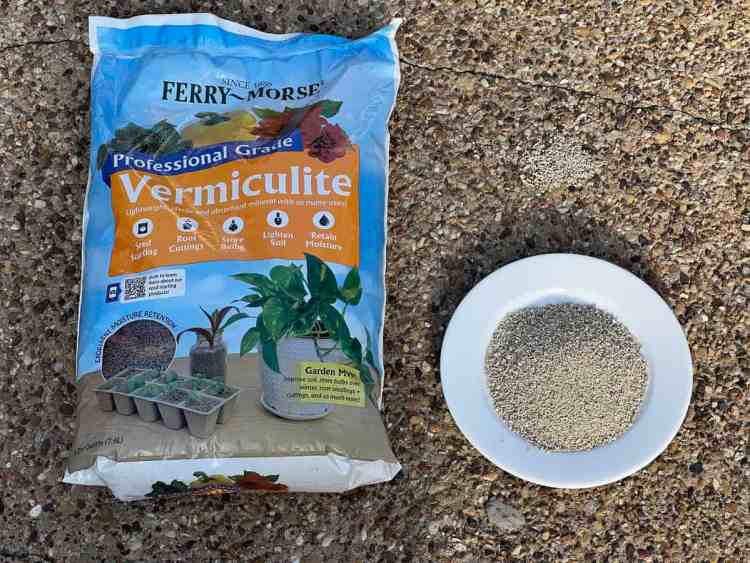

Application and Usage of Vermiculite in Clay Soil
How to incorporate vermiculite into clay soil
To incorporate vermiculite into clay soil, it is essential to prepare the soil properly. Start by removing any debris such as rocks, weeds, and large clumps of clay. Then, calculate the appropriate amount of vermiculite to incorporate into the soil based on the desired vermiculite-to-soil ratio. Spread the vermiculite evenly over the soil surface and use a garden rake or hoe to mix it thoroughly into the top 6-8 inches of soil. Ensure that the vermiculite is evenly distributed, allowing it to work its magic throughout the soil profile.
Recommended vermiculite to soil ratios
The recommended vermiculite-to-soil ratio depends on the specific needs of the soil and plants. Generally, a ratio of 1 part vermiculite to 3 parts soil is a good starting point. However, in extremely heavy clay soils, a higher ratio of vermiculite may be needed to achieve significant improvement. It is essential to consider the existing characteristics of the clay soil and the specific requirements of the plants being grown. Experimentation and observation may be necessary to determine the ideal vermiculite to soil ratio for optimal results.
Proper techniques for using vermiculite in gardening
When using vermiculite in gardening, it is essential to follow proper techniques to maximize its benefits. Ensure that the vermiculite is evenly mixed into the soil, allowing it to be distributed uniformly. It is also important to water the soil thoroughly after incorporating vermiculite to promote proper hydration and settling. Regularly monitor the moisture levels in the soil, as vermiculite can absorb and retain moisture for an extended period. Additionally, proper plant selection and placement should be considered to complement the improved soil conditions provided by vermiculite.
Success Stories and Case Studies
Examples of successful vermiculite usage in clay soil
There are numerous success stories showcasing the effectiveness of vermiculite in improving clay soil. Many gardeners have reported significant improvements in their plants’ health and productivity after incorporating vermiculite into their clay soil. For example, gardeners have seen a reduction in waterlogged conditions, improved root growth, and increased yields. Plants that previously struggled in the heavy and compacted clay soil have thrived after the addition of vermiculite. These success stories demonstrate the transformative potential of using vermiculite in gardening, particularly in clay soil.
Real-life testimonies from gardeners
Gardeners who have used vermiculite in clay soil have shared their positive experiences and testimonies. They have highlighted the noticeable improvements in soil structure, water drainage, and plant health. These gardeners have observed that vermiculite has made their clay soil easier to work with, allowing for better root development and overall plant vigor. Additionally, they have noted better water retention and reduced water runoff during heavy rains. These testimonials serve as valuable insights into the practical benefits of using vermiculite in clay soil.
Before and after comparisons
Comparisons of clay soil before and after the incorporation of vermiculite reveal the remarkable transformation that can occur. Before using vermiculite, clay soil is typically hard, compacted, and difficult to manage. Plant growth may be stunted, and waterlogged conditions may prevail. However, after the addition of vermiculite, the soil becomes more friable, allowing for easier cultivation and root penetration. Water drainage improves, preventing waterlogging and promoting healthier roots. These before and after comparisons clearly demonstrate the power of vermiculite in breaking up clay soil and enhancing its suitability for gardening.
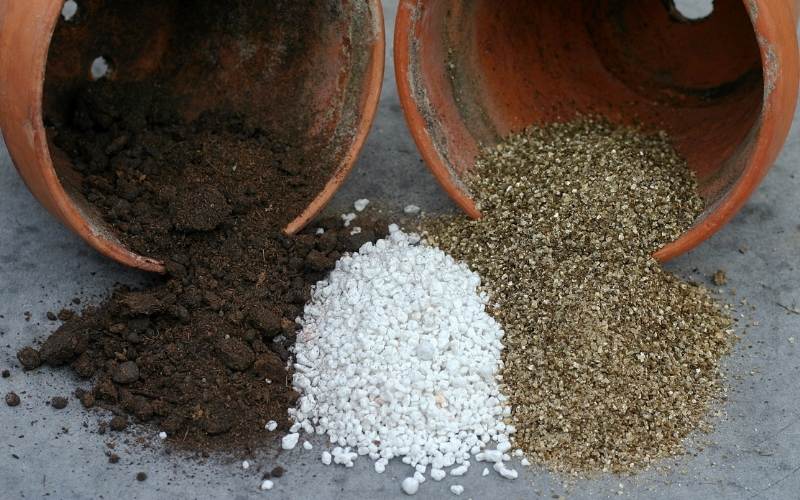

Limitations of Vermiculite in Clay Soil
Factors to consider before using vermiculite in clay soil
While vermiculite is an excellent soil amendment for clay soil, certain factors should be considered before use. One important factor is cost, as vermiculite can be relatively more expensive compared to other soil improvement methods. Additionally, the availability of vermiculite in some regions may be limited, making it less accessible for certain gardeners. It is also important to consider the existing nutrient levels in the soil, as vermiculite does not supply significant nutrients itself. If the clay soil is severely nutrient-deficient, additional fertilization may be necessary alongside the use of vermiculite.
Potential challenges and drawbacks
Although vermiculite offers many benefits for clay soil, there are potential challenges and drawbacks to be aware of. One challenge is the need for proper soil preparation and incorporation techniques, as haphazard mixing may not yield desired results. Additionally, vermiculite particles can degrade over time, reducing their effectiveness in breaking up clay soil. Regular soil testing and monitoring may be necessary to ensure the continued efficacy of vermiculite as a soil amendment. It is also important to note that vermiculite is not a quick-fix solution and may require time and patience to see significant improvements in the soil.
Alternative soil improvement methods
In addition to vermiculite, there are alternative soil improvement methods that can be considered for clay soil. Organic matter such as compost, aged manure, and peat moss can help improve soil structure and drainage. Adding sand or perlite can also increase soil aeration and prevent compaction. Furthermore, the practice of crop rotation and cover cropping can contribute to overall soil health and fertility. It is important to assess the specific needs of the soil and plants and explore various soil improvement methods to determine the most suitable approach for your gardening needs.
Tips and Best Practices
Dos and don’ts when using vermiculite for clay soil
When using vermiculite for clay soil, there are certain dos and don’ts to keep in mind. Do thoroughly mix the vermiculite into the soil to ensure even distribution. Don’t add excessive amounts of vermiculite, as it can lead to overly lightweight soil and poor root anchorage. Do regularly monitor soil moisture levels, as vermiculite can absorb and retain water for an extended period. Don’t solely rely on vermiculite for all soil nutrient needs; additional fertilization may be necessary. Do experiment and observe the effects of vermiculite on your clay soil, as every garden is unique.
Precautions and safety measures
While vermiculite is generally safe to use, it is important to take certain precautions to ensure safety. When handling vermiculite, it is recommended to wear gloves and a dust mask to minimize the risk of inhaling fine particles. As with any gardening activities, it is also advisable to wash hands thoroughly after handling vermiculite. If allergic reactions or respiratory issues occur, it is best to discontinue use and seek medical advice. Following these precautions can help ensure a safe and enjoyable gardening experience when using vermiculite.
Recommended gardening techniques for clay soil
In addition to using vermiculite, certain gardening techniques can be beneficial for clay soil. One technique is to practice proper watering, ensuring that water is applied slowly and deeply to allow for better absorption and root penetration. Another technique is to implement raised bed gardening, where the soil is elevated above ground level, allowing for better drainage and root development. Additionally, amending clay soil with organic matter such as compost can improve its structure and fertility. These recommended techniques, coupled with the use of vermiculite, can lead to successful gardening in clay soil.
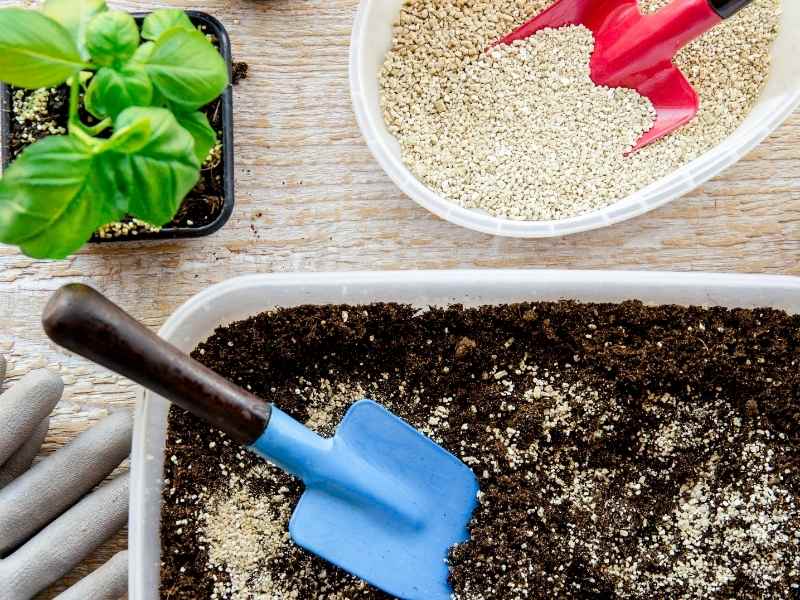

Scientific Research and Studies
Research findings on vermiculite’s impact on clay soil
Numerous scientific research studies have explored the impact of vermiculite on clay soil. These studies have consistently shown positive effects of vermiculite on improving the structure and characteristics of clay soil. The research findings indicate that vermiculite enhances water retention, aeration, and nutrient availability in clay soil. It contributes to the overall improvement of soil quality and promotes healthy plant growth. These research findings provide scientific evidence for the effectiveness of vermiculite as a soil amendment for clay soil.
Studies comparing different soil improvement methods
Comparative studies have been conducted to evaluate the effectiveness of different soil improvement methods, including vermiculite, in addressing the challenges of clay soil. These studies have compared vermiculite with other amendments such as sand, organic matter, and other mineral additives. The results have shown that vermiculite performs favorably in improving soil structure, water drainage, and nutrient availability compared to alternative soil improvement methods. These studies provide valuable insights into the efficacy of vermiculite in relation to other soil improvement approaches.
Expert opinions and peer-reviewed articles
Expert opinions and peer-reviewed articles also provide valuable information on the topic of using vermiculite in clay soil. Experts in the field of soil science and horticulture have shared their insights and recommendations based on years of research and practical experience. Peer-reviewed articles contribute to the scientific discourse on the effectiveness of vermiculite by presenting data, analysis, and conclusions derived from rigorous research. These expert opinions and peer-reviewed articles offer a well-rounded perspective on the role of vermiculite in breaking up clay soil and improving soil quality.
Conclusion
Summary of findings
In conclusion, vermiculite is an excellent soil amendment for clay soil due to its unique properties and ability to improve soil structure, water retention, and aeration. It offers numerous benefits, including breaking up compacted clay, enhancing root development, and improving overall plant health. Vermiculite can be incorporated into clay soil by thoroughly mixing it into the top layer of soil. It is recommended to start with a vermiculite-to-soil ratio of 1:3, although adjustments may be needed based on specific soil and plant requirements.
Final thoughts on vermiculite’s effectiveness in breaking up clay soil
Vermiculite has proven to be highly effective in breaking up clay soil and improving its suitability for gardening. Gardeners and researchers alike have documented significant improvements in soil structure, water drainage, and root development after using vermiculite. While vermiculite is not without its limitations and considerations, its benefits outweigh the potential challenges. With proper techniques and in combination with other soil improvement methods, vermiculite can be a valuable tool in transforming clay soil into a fertile and productive gardening medium.
Closing remarks
In conclusion, vermiculite offers a practical and effective solution for breaking up clay soil and improving its overall quality. Its unique properties and ability to address the specific challenges posed by clay soil make it a valuable resource for gardeners. By understanding the role of vermiculite, following recommended techniques, and considering alternative soil improvement methods, gardeners can overcome the limitations of clay soil and create thriving gardens. With vermiculite, clay soil can be transformed into a fertile and nourishing environment for plants, bringing joy and success to every gardener.




